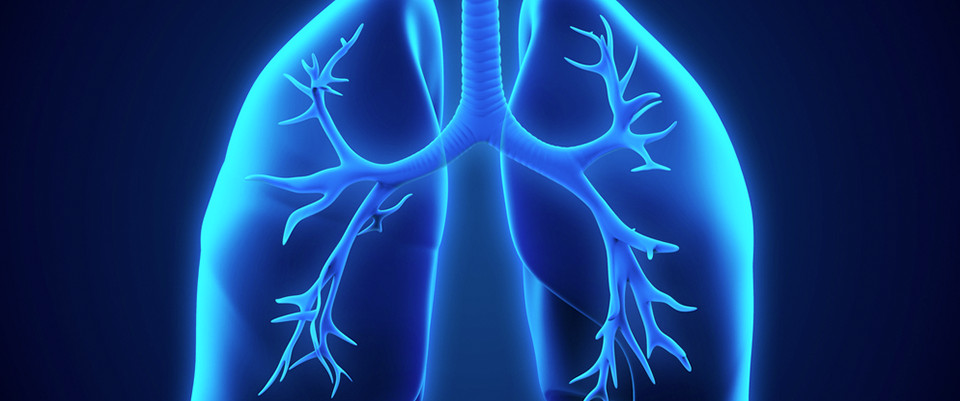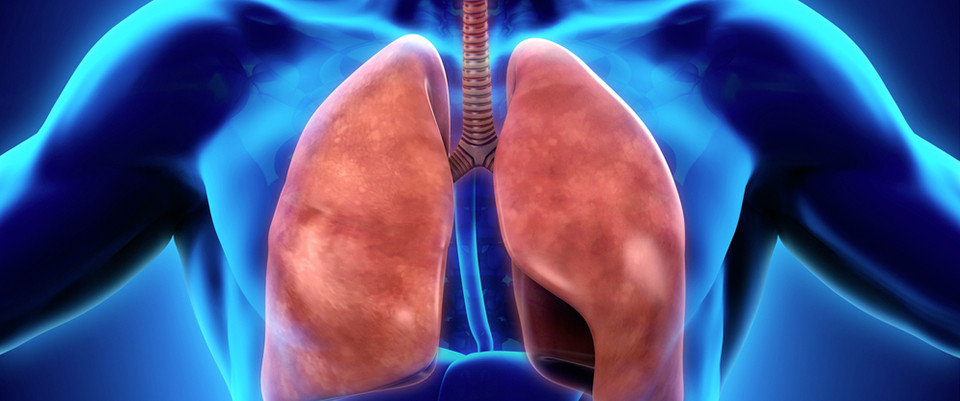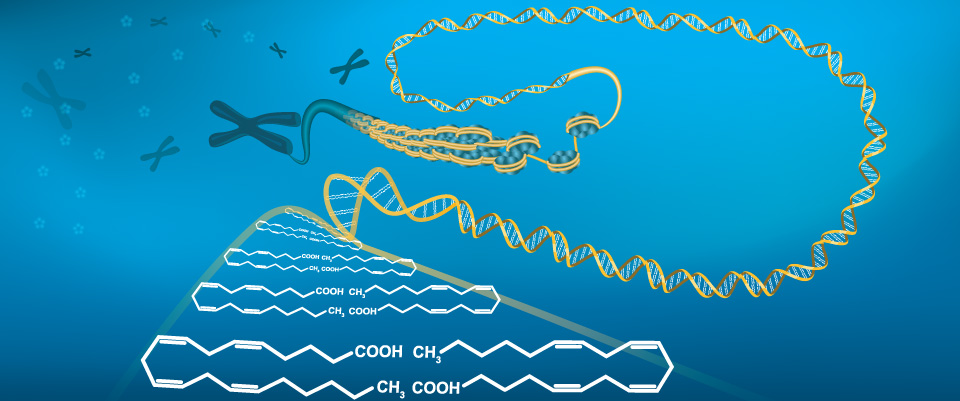PubMed
Combining Targeted Metabolites Analysis and Transcriptomics to Reveal Chemical Composition Difference and Underlying Transcriptional Regulation in Maca (Lepidium Meyenii Walp.) Ecotypes.
Related Articles
Combining Targeted Metabolites Analysis and Transcriptomics to Reveal Chemical Composition Difference and Underlying Transcriptional Regulation in Maca (Lepidium Meyenii Walp.) Ecotypes.
Genes (Basel). 2018 Jul 03;9(7):
Authors: Chen Q, Li M, Wang C, Li Z, Xu J, Zheng Q, Liu P, Zhou H
Abstract
Maca (Lepidium meyenii Walp.) is a traditional Andean crop with great potential for various sanitarian and medical functions, which is attracting increased research attention. The majority of previous Maca studies were focused on biochemistry and pharmacodynamics, while the genetic basis of its unique characteristics lagged due to a lack of genome information. The authors perform gas chromatography-mass spectrometry (GC/MS) analysis in the hypocotyls of three Maca ecotypes and identify 79 compounds. Among them, 62 compounds have distinct profiles among Maca ecotypes. To reveal the underlying regulatory mechanism of the chemical composition differences, de novo transcriptome sequencing is performed and the transcription profiles of three Maca ecotypes are comparatively analyzed. Functional analysis indicates several key pathways, including “starch and sucrose metabolism,” “phenylpropanoid biosynthesis,” “phenylalanine metabolism” and “plant-pathogen interaction,” are involved in regulating the chemical compositions of Maca. Combining metabolomics and transcriptomics analysis indicates transcription factors such as MYB and WRKY and mediators such as protein kinase and bifunctional inhibitors might be critical regulators of chemical composition in Maca. The transcriptome reference genome and differentially expressed genes (DEGs) obtained in this study might serve as an initial step to illustrate the genetic differences in nutrient component, secondary metabolites content, medicinal function and stress resistance in Maca.
PMID: 29970867 [PubMed]
Visualizing Energy Charge in Breast Carcinoma Tissues by MALDI Mass-spectrometry Imaging Profiles of Low-molecular-weight Metabolites.
Related Articles
Visualizing Energy Charge in Breast Carcinoma Tissues by MALDI Mass-spectrometry Imaging Profiles of Low-molecular-weight Metabolites.
Anticancer Res. 2018 Jul;38(7):4267-4272
Authors: Torata N, Kubo M, Miura D, Ohuchida K, Mizuuchi Y, Fujimura Y, Hayakawa E, Kai M, Oda Y, Mizumoto K, Hashizume M, Nakamura M
Abstract
BACKGROUND/AIM: Metabolomics is widely used for biomarker discovery, but conventional mass-spectrometry extraction procedures lose the spatial localization of metabolites. In this study, we directly analyzed breast carcinoma tissues embedded in frozen tissue microarrays (fTMAs) using MALDI mass-spectrometry imaging (MALDI-MSI).
MATERIALS AND METHODS: A total of 119 breast tissues (84 carcinoma and 35 normal) were used. MSI data were extracted from each tissue.
RESULTS: Overall, 185 of 1,915 peaks which were commonly detected in 60% of target areas were subjected to further analysis. One hundred and fifty-two peaks of carcinoma showed significantly higher intensity than normal. Comparing metabolite profiles from carcinoma and normal tissues, energy charge (EC) and the sum of adenosine phosphate compound (AXP) indicated significantly higher intensities in cancerous tissues than normal. But comparisons of EC and AXP among lymph node metastasis, tumor size and tumor subtypes indicated no significant differences.
CONCLUSION: Breast carcinoma tissues had higher EC and AXP values than normal. MALDI-MSI could be a tool for characterizing breast carcinoma.
PMID: 29970560 [PubMed - in process]
Unique Francisella Phosphatidylethanolamine Acts as a Potent Anti-Inflammatory Lipid.
Unique Francisella Phosphatidylethanolamine Acts as a Potent Anti-Inflammatory Lipid.
J Innate Immun. 2018 Jul 03;:1-15
Authors: Ireland R, Schwarz B, Nardone G, Wehrly TD, Broeckling CD, Chiramel AI, Best SM, Bosio CM
Abstract
Virulent Francisella tularensis subsp. tularensis (Ftt) is a dynamic, intracellular, bacterial pathogen. Its ability to evade and rapidly suppress host inflammatory responses is considered a key element for its profound virulence. We previously established that Ftt lipids play a role in inhibiting inflammation, but we did not determine the lipid species mediating this process. Here, we show that a unique, abundant, phosphatidylethanolamine (PE), present in Francisella, contributes to driving the suppression of inflammatory responses in human and mouse cells. Acyl chain lengths of this PE, C24: 0 and C10: 0, were key to the suppressive capabilities of Francisella PE. Addition of synthetic PE 24: 0-10: 0 resulted in the accumulation of PE in host cells for up to 24 h of incubation, and recapitulated the inhibition of inflammatory responses observed with native Ftt PE. Importantly, this novel PE significantly inhibited inflammatory responses driven by a medically and globally important flavivirus, dengue fever virus. Thus, targeting these lipids and/or the pathways that they manipulate represents a new strategy to combat immunosuppression engendered by Ftt, but they also show promise as a novel therapeutic intervention for significant viral infections.
PMID: 29969788 [PubMed - as supplied by publisher]
Insights into myalgic encephalomyelitis/chronic fatigue syndrome phenotypes through comprehensive metabolomics.
Insights into myalgic encephalomyelitis/chronic fatigue syndrome phenotypes through comprehensive metabolomics.
Sci Rep. 2018 Jul 03;8(1):10056
Authors: Nagy-Szakal D, Barupal DK, Lee B, Che X, Williams BL, Kahn EJR, Ukaigwe JE, Bateman L, Klimas NG, Komaroff AL, Levine S, Montoya JG, Peterson DL, Levin B, Hornig M, Fiehn O, Lipkin WI
Abstract
The pathogenesis of ME/CFS, a disease characterized by fatigue, cognitive dysfunction, sleep disturbances, orthostatic intolerance, fever, irritable bowel syndrome (IBS), and lymphadenopathy, is poorly understood. We report biomarker discovery and topological analysis of plasma metabolomic, fecal bacterial metagenomic, and clinical data from 50 ME/CFS patients and 50 healthy controls. We confirm reports of altered plasma levels of choline, carnitine and complex lipid metabolites and demonstrate that patients with ME/CFS and IBS have increased plasma levels of ceramide. Integration of fecal metagenomic and plasma metabolomic data resulted in a stronger predictive model of ME/CFS (cross-validated AUC = 0.836) than either metagenomic (cross-validated AUC = 0.745) or metabolomic (cross-validated AUC = 0.820) analysis alone. Our findings may provide insights into the pathogenesis of ME/CFS and its subtypes and suggest pathways for the development of diagnostic and therapeutic strategies.
PMID: 29968805 [PubMed - in process]
Metabolomic and lipidomic analysis of the effect of pioglitazone on hepatic steatosis in a rat model of obese type 2 diabetes.
Metabolomic and lipidomic analysis of the effect of pioglitazone on hepatic steatosis in a rat model of obese type 2 diabetes.
Br J Pharmacol. 2018 Jul 02;:
Authors: Yang H, Suh DH, Kim DH, Jung ES, Liu KH, Lee CH, Park CY
Abstract
BACKGROUND AND PURPOSE: Thiazolidinediones, acting as peroxisome proliferator-activated receptor gamma ligands, reduce hepatic steatosis in humans and animals. However, the underlying mechanism of this action remains unclear. The purpose of this study was to investigate changes in hepatic metabolites and lipids in response to treatment with the thiazolidinedione pioglitazone in an animal model of obese type 2 diabetes.
EXPERIMENTAL APPROACH: Male Otsuka Long-Evans Tokushima Fatty (OLETF) rats were orally administered either vehicle (control) or pioglitazone (30 mg·kg-1 ) and fed a high-fat diet (60 kcal % fat) for 12 weeks. Hepatic metabolites were analyzed via metabolomic and lipidomic analyses. Gene expression and phospholipase A2 (PLA2 ) activity were analyzed in pioglitazone and control rat livers.
KEY RESULTS: OLETF rats that received pioglitazone showed decreased fat accumulation and improvement of lipid profiles in the liver compared to control rats. Pioglitazone treatment significantly altered levels of hepatic metabolites, including free fatty acids, lysophosphatydylcholines, and phosphatidylcholines in the liver. In addition, pioglitazone significantly reduced the expression of genes involved in hepatic de novo lipogenesis and fatty acid uptake and transport, whereas genes related to fatty acid oxidation were up-regulated. Gene expression and enzyme activity of PLA2 , which hydrolyzes phosphatidylcholines to release lysophosphatydylcholines and free fatty acids, were significantly decreased in the livers of pioglitazone-treated rats compared to control rats.
CONCLUSION AND IMPLICATIONS: Our results present evidence for the ameliorative effect of pioglitazone on hepatic steatosis, largely due to the regulation of lipid metabolism, including fatty acids, lysophosphatydylcholines, phosphatidylcholines, and related gene-expression patterns.
PMID: 29968381 [PubMed - as supplied by publisher]
Round robin study of formalin-fixed paraffin-embedded tissues in mass spectrometry imaging.
Round robin study of formalin-fixed paraffin-embedded tissues in mass spectrometry imaging.
Anal Bioanal Chem. 2018 Jul 03;:
Authors: Buck A, Heijs B, Beine B, Schepers J, Cassese A, Heeren RMA, McDonnell LA, Henkel C, Walch A, Balluff B
Abstract
Mass spectrometry imaging (MSI) has provided many results with translational character, which still have to be proven robust in large patient cohorts and across different centers. Although formalin-fixed paraffin-embedded (FFPE) specimens are most common in clinical practice, no MSI multicenter study has been reported for FFPE samples. Here, we report the results of the first round robin MSI study on FFPE tissues with the goal to investigate the consequences of inter- and intracenter technical variation on masking biological effects. A total of four centers were involved with similar MSI instrumentation and sample preparation equipment. A FFPE multi-organ tissue microarray containing eight different types of tissue was analyzed on a peptide and metabolite level, which enabled investigating different molecular and biological differences. Statistical analyses revealed that peptide intercenter variation was significantly lower and metabolite intercenter variation was significantly higher than the respective intracenter variations. When looking at relative univariate effects of mass signals with statistical discriminatory power, the metabolite data was more reproducible across centers compared to the peptide data. With respect to absolute effects (cross-center common intensity scale), multivariate classifiers were able to reach on average > 90% accuracy for peptides and > 80% for metabolites if trained with sufficient amount of cross-center data. Overall, our study showed that MSI data from FFPE samples could be reproduced to a high degree across centers. While metabolite data exhibited more reproducibility with respect to relative effects, peptide data-based classifiers were more directly transferable between centers and therefore more robust than expected. Graphical abstract ᅟ.
PMID: 29968108 [PubMed - as supplied by publisher]
Higher Concentrations of BCAAs and 3-HIB Are Associated with Insulin Resistance in the Transition from Gestational Diabetes to Type 2 Diabetes.
Higher Concentrations of BCAAs and 3-HIB Are Associated with Insulin Resistance in the Transition from Gestational Diabetes to Type 2 Diabetes.
J Diabetes Res. 2018;2018:4207067
Authors: Andersson-Hall U, Gustavsson C, Pedersen A, Malmodin D, Joelsson L, Holmäng A
Abstract
Aim: Determine the metabolic profile and identify risk factors of women transitioning from gestational diabetes mellitus (GDM) to type 2 diabetes mellitus (T2DM).
Methods: 237 women diagnosed with GDM underwent an oral glucose tolerance test (OGTT), anthropometrics assessment, and completed lifestyle questionnaires six years after pregnancy. Blood was analysed for clinical variables (e.g., insulin, glucose, HbA1c, adiponectin, leptin, and lipid levels) and NMR metabolomics. Based on the OGTT, women were divided into three groups: normal glucose tolerance (NGT), impaired glucose tolerance (IGT), and T2DM.
Results: Six years after GDM, 19% of subjects had T2DM and 19% IGT. After BMI adjustment, the IGT group had lower HDL, higher leptin, and higher free fatty acid (FFA) levels, and the T2DM group higher triglyceride, FFA, and C-reactive protein levels than the NGT group. IGT and T2DM groups reported lower physical activity. NMR measurements revealed that levels of branched-chain amino acids (BCAAs) and the valine metabolite 3-hydroxyisobyturate were higher in T2DM and IGT groups and correlated with measures of insulin resistance and lipid metabolism.
Conclusion: In addition to well-known clinical risk factors, BCAAs and 3-hydroxyisobyturate are potential markers to be evaluated as predictors of metabolic risk after pregnancy complicated by GDM.
PMID: 29967793 [PubMed - in process]
Effectiveness of Interventions to Modulate the Rumen Microbiota Composition and Function in Pre-ruminant and Ruminant Lambs.
Effectiveness of Interventions to Modulate the Rumen Microbiota Composition and Function in Pre-ruminant and Ruminant Lambs.
Front Microbiol. 2018;9:1273
Authors: Saro C, Hohenester UM, Bernard M, Lagrée M, Martin C, Doreau M, Boudra H, Popova M, Morgavi DP
Abstract
Modulating the assembly of the ruminal microbiota might have practical implications in production. We tested how an early-life dietary intervention in lambs influences the diversity and function of the ruminal microbiota during and after the intervention. Microbiota resilience during a repeated dietary intervention was also tested. The treatment, aiming to mitigate enteric methane emissions, combined garlic essential oil and linseed oil. Fifty-six lambs and their dams were allocated to two groups and treatment (T1) or placebo (C1) was drenched from birth until 10 weeks of life. Lambs were weaned at 8 weeks. From 16 to 20 weeks, lambs in each group were divided in two subgroups that received (T1-T2 and C1-T2) or not (T1-C2 and C1-C2) the same treatment. Measurements were done at 8, 14, and 20 weeks. Average daily gain was similar between groups. Methane production was reduced by treatment at 8 and 20 weeks but at 14 weeks it was similar between C1 and T1. Interestingly, early-life treated lambs displayed a numerical increase (P = 0.12) in methane emissions at 20 weeks compared with non-treated lambs. Concentration of VFA was not affected by the intervention at 8 or 14 weeks but a lower concentration was observed in T2 lambs compared with C2 at week 20. Metataxonomics (rRNA gene) revealed differences in archaeal communities between groups of lambs when treatment was applied (weeks 8 and 20); whereas, in accord with methane emissions, these differences disappeared when treatment was discontinued (week 14). Protozoal community structure was not affected by treatment. In contrast, bacterial community structure differed between treated and non-treated lambs during and after the intervention. Rumen and urine LC-MS and NMR metabolomics at week 20 separated C2 from T2 lambs and correlation analysis highlighted interactions between microbes and metabolites, notably that of methylated compounds and Methanomassiliicocceae methanogens. This study demonstrates that a long-term early-life intervention induced modifications in the composition of the rumen bacterial community that persisted after the intervention ceased with little or no effect on archaeal and protozoal communities. However, there was no persistency of the early-life intervention on methanogenesis indicating resilience for this function.
PMID: 29967596 [PubMed]
Metabolomic Analysis by Nuclear Magnetic Resonance Spectroscopy as a New Approach to Understanding Inflammation and Monitoring of Pharmacological Therapy in Children and Young Adults With Cystic Fibrosis.
Metabolomic Analysis by Nuclear Magnetic Resonance Spectroscopy as a New Approach to Understanding Inflammation and Monitoring of Pharmacological Therapy in Children and Young Adults With Cystic Fibrosis.
Front Pharmacol. 2018;9:595
Authors: Montuschi P, Lucidi V, Paris D, Montemitro E, Shohreh R, Mores N, Melck D, Santini G, Majo F, Motta A
Abstract
15-F2t-Isoprostane, a reliable biomarker of oxidative stress, has been found elevated in exhaled breath condensate (EBC), a non-invasive technique for sampling of airway secretions, in patients with cystic fibrosis (CF). Azithromycin has antioxidant properties in experimental models of CF, but its effects on oxidative stress in CF patients are largely unknown. Primary objective of this pilot, proof-of-concept, prospective, parallel group, pharmacological study, was investigating the potential antioxidant effects of azithromycin in CF patients as reflected by EBC 15-F2t-isoprostane. Secondary objectives included studying the effect of azithromycin on EBC and serum metabolic profiles, and on serum 15-F2t-isoprostane. In CF patients who were on maintenance treatment with oral vitamin E (200 UI once daily), treatment with oral azithromycin (250 or 500 mg depending on body weight) plus vitamin E (400 UI once daily) (group A) (n = 24) or oral vitamin E alone (400 UI once daily) (group B) (n = 21) was not associated with changes in EBC 15-F2t-isoprostane concentrations compared with baseline values after 8-weeks treatment or 2 weeks after treatment suspension. There was no between-group difference in post-treatment EBC 15-F2t-isoprostane. Likewise, no within- or between-group differences in serum 15-F2t-isoprostane concentrations were observed in either study group. NMR spectroscopy-based metabolomics of EBC shows that suspension of both azithromycin plus vitamin E and vitamin E alone has a striking effect on metabolic profiles in EBC. Between-group comparisons show that EBC metabolite distribution after treatment and 2 weeks after treatment suspension is different. Quantitative differences in ethanol, saturated fatty acids, acetate, acetoin/acetone, and methanol are responsible for these differences. Our study was unable to show antioxidant effect of azithromycin as add-on treatment with doubling the dose of oral vitamin E as reflected by 15-F2t-isoprostane concentrations in EBC. Add-on therapy with azithromycin itself does not induce EBC metabolite changes, but its suspension is associated with EBC metabolic profiles that are different from those observed after vitamin E suspension. The pathophysiological and therapeutic implications of these findings in patients with stable CF are unknown and require further research. Preliminary data suggest that EBC NMR-based metabolomics might be used for assessing the effects of pharmacological treatment suspension in stable CF patients.
PMID: 29967580 [PubMed]
Interrogation of the Gulf toadfish intestinal proteome response to hypersalinity exposure provides insights into osmoregulatory mechanisms and regulation of carbonate mineral precipitation.
Interrogation of the Gulf toadfish intestinal proteome response to hypersalinity exposure provides insights into osmoregulatory mechanisms and regulation of carbonate mineral precipitation.
Comp Biochem Physiol Part D Genomics Proteomics. 2018 Jun 23;27:66-76
Authors: Schauer KL, Reddam A, Xu EG, Wolfe LM, Grosell M
Abstract
Marine bony fish live in a hyperosmotic environment and maintain osmotic homeostasis by drinking seawater, and absorbing salt and water across their gastrointestinal tract. Although the ion and water transport mechanisms in the intestine have been the subject of much study, numerous questions remain unanswered. To address some of these questions, a shotgun proteomics methodology employing isobaric tandem mass tags (TMT) was used to interrogate the anterior intestine, posterior intestine, and intestinal fluid proteomes of Gulf toadfish (Opsanus beta) acclimated to normal (35 ppt) or hypersaline (60 ppt) seawater. Relative protein abundance between tissues was also investigated using label free quantitation. Protein products from nearly 3000 unique toadfish loci were identified and quantified between the tissues, and pathway analysis was performed to gain insight into biological significance. Numerous proteins potentially involved in ion transport, digestion, nutrient absorption, and intestinal CaCO3 precipitation were found to respond to changing salinity, providing additional insight into the molecular mechanisms behind these processes. Intestinal protein heterogeneity was also observed with proteins involved in ion transport responding to hypersalinity exposure primarily in the anterior intestine, and proteins involved in digestion and nutrient absorption showing higher abundance in the anterior intestine, regardless of salinity.
PMID: 29966935 [PubMed - as supplied by publisher]
Alterations in urinary metabolomic profiles due to lead exposure from a lead-acid battery recycling site.
Alterations in urinary metabolomic profiles due to lead exposure from a lead-acid battery recycling site.
Environ Pollut. 2018 Jun 26;242(Pt A):98-105
Authors: Eguchi A, Nomiyama K, Sakurai K, Kim Trang PT, Viet PH, Takahashi S, Iwata H, Tanabe S, Todaka E, Mori C
Abstract
Lead poisoning is considered a public health threat, particularly in developing countries. Health problems from Pb exposure occur in many parts of the world, especially near Pb mines, Pb smelters, and used lead-acid battery (ULAB) recycling plants. In this study, we analyzed the urine metabolome of residents in a village located near a ULAB recycling facility to investigate the biological effects of Pb exposure (ULAB: n = 44, Reference: n = 51). Lasso linear regression models were moderately predictive of blood Pb levels, as evaluated by a training set (R2 = 0.813) and against an external test set (R2EXT = 0.647). In lasso logistic regression models, areas under receiver operating characteristic curves, as measured by 5-fold cross-validation (AUCCV = 0.871) and against an external test set (AUCEXT = 0.917), indicated accurate classification of urine samples from the affected village and from a reference site. Ten candidate biomarkers identified at false discovery rates of <0.05 were associated with ATP-binding cassette (ABC) transporters, possibly related to the disruption of small-molecule transport in the kidney; amino acid, porphyrin, and chlorophyll metabolism; and the heme biosynthetic pathway. Collectively, the results suggest that lead Pb is related to the health effects in individuals residing in ULAB site by alteration of these biological pathways.
PMID: 29966840 [PubMed - as supplied by publisher]
Dietary Leucine Supplement Ameliorates Hepatic Steatosis and Diabetic Nephropathy in db/db Mice.
Related Articles
Dietary Leucine Supplement Ameliorates Hepatic Steatosis and Diabetic Nephropathy in db/db Mice.
Int J Mol Sci. 2018 Jun 30;19(7):
Authors: Chen KH, Chen YL, Tang HY, Hung CC, Yen TH, Cheng ML, Shiao MS, Chen JK
Abstract
Dietary leucine supplementation has been explored for the therapeutic intervention of obesity and obesity-induced metabolic dysfunctions. In this study, we aim to examine the effects of dietary leucine supplementation in db/db mice. Mice were treated with or without leucine (1.5% w/v) in drinking water for 12 weeks. The leucine supplement was found to reduce insulin resistance and hepatic steatosis in db/db mice. Using Nuclear Magnetic Resonance (NMR)-based lipidomics, we found that the reduction of hepatic triglyceride synthesis was correlated with attenuated development of fatty liver. In addition, diabetic nephropathy (DN) was also ameliorated by leucine. Using liquid chromatography⁻time-of-flight mass spectrometry (LC-TOF MS)-based urine metabolomics analysis, we found that the disturbance of the tricarboxylic acid (TCA) cycle was reversed by leucine. The beneficial effects of leucine were probably due to AMP-activated protein kinase (AMPK) activation in the liver and kidneys of db/db mice. Thus, dietary leucine supplementation may potentially be a nutritional intervention to attenuate hepatic steatosis and early DN in type II diabetes.
PMID: 29966331 [PubMed - in process]
Two-Scale 13C Metabolic Flux Analysis for Metabolic Engineering.
Related Articles
Two-Scale 13C Metabolic Flux Analysis for Metabolic Engineering.
Methods Mol Biol. 2018;1671:333-352
Authors: Ando D, Garcia Martin H
Abstract
Accelerating the Design-Build-Test-Learn (DBTL) cycle in synthetic biology is critical to achieving rapid and facile bioengineering of organisms for the production of, e.g., biofuels and other chemicals. The Learn phase involves using data obtained from the Test phase to inform the next Design phase. As part of the Learn phase, mathematical models of metabolic fluxes give a mechanistic level of comprehension to cellular metabolism, isolating the principle drivers of metabolic behavior from the peripheral ones, and directing future experimental designs and engineering methodologies. Furthermore, the measurement of intracellular metabolic fluxes is specifically noteworthy as providing a rapid and easy-to-understand picture of how carbon and energy flow throughout the cell. Here, we present a detailed guide to performing metabolic flux analysis in the Learn phase of the DBTL cycle, where we show how one can take the isotope labeling data from a 13C labeling experiment and immediately turn it into a determination of cellular fluxes that points in the direction of genetic engineering strategies that will advance the metabolic engineering process.For our modeling purposes we use the Joint BioEnergy Institute (JBEI) Quantitative Metabolic Modeling (jQMM) library, which provides an open-source, python-based framework for modeling internal metabolic fluxes and making actionable predictions on how to modify cellular metabolism for specific bioengineering goals. It presents a complete toolbox for performing different types of flux analysis such as Flux Balance Analysis, 13C Metabolic Flux Analysis, and it introduces the capability to use 13C labeling experimental data to constrain comprehensive genome-scale models through a technique called two-scale 13C Metabolic Flux Analysis (2S-13C MFA) [1]. In addition to several other capabilities, the jQMM is also able to predict the effects of knockouts using the MoMA and ROOM methodologies. The use of the jQMM library is illustrated through a step-by-step demonstration, which is also contained in a digital Jupyter Notebook format that enhances reproducibility and provides the capability to be adopted to the user's specific needs. As an open-source software project, users can modify and extend the code base and make improvements at will, providing a base for future modeling efforts.
PMID: 29170969 [PubMed - indexed for MEDLINE]
Multi-capillary Column Ion Mobility Spectrometry of Volatile Metabolites for Phenotyping of Microorganisms.
Related Articles
Multi-capillary Column Ion Mobility Spectrometry of Volatile Metabolites for Phenotyping of Microorganisms.
Methods Mol Biol. 2018;1671:229-258
Authors: Halbfeld C, Baumbach JI, Blank LM, Ebert BE
Abstract
Rational strain engineering requires solid testing of phenotypes including productivity and ideally contributes thereby directly to our understanding of the genotype-phenotype relationship. Actually, the test step of the strain engineering cycle becomes the limiting step, as ever advancing tools for generating genetic diversity exist. Here, we briefly define the challenge one faces in quantifying phenotypes and summarize existing analytical techniques that partially overcome this challenge. We argue that the evolution of volatile metabolites can be used as proxy for cellular metabolism. In the simplest case, the product of interest is a volatile (e.g., from bulk alcohols to special fragrances) that is directly quantified over time. But also nonvolatile products (e.g., from bulk long-chain fatty acids to natural products) require major flux rerouting that result potentially in altered volatile production. While alternative techniques for volatile determination exist, rather few can be envisaged for medium to high-throughput analysis required for phenotype testing. Here, we contribute a detailed protocol for an ion mobility spectrometry (IMS) analysis that allows volatile metabolite quantification down to the ppb range. The sensitivity can be exploited for small-scale fermentation monitoring. The insights shared might contribute to a more frequent use of IMS in biotechnology, while the experimental aspects are of general use for researchers interested in volatile monitoring.
PMID: 29170963 [PubMed - indexed for MEDLINE]
Enological Tannin Effect on Red Wine Color and Pigment Composition and Relevance of the Yeast Fermentation Products.
Related Articles
Enological Tannin Effect on Red Wine Color and Pigment Composition and Relevance of the Yeast Fermentation Products.
Molecules. 2017 Nov 23;22(12):
Authors: García-Estévez I, Alcalde-Eon C, Puente V, Escribano-Bailón MT
Abstract
Enological tannins are widely used in the winemaking process either to improve different wine characteristics (color stability, among others) or to compensate for low tannin levels. In this work, the influence of the addition of two different enological tannins, mainly composed of hydrolysable (ellagitannins) and condensed tannins, on the evolution of color and pigment composition of two different types of model systems containing the five main grape anthocyanins was studied. In addition, the effect of the addition of an enological tannin on the color and pigment composition of red wines made from Vitis vinifera L. cv Tempranillo grapes was also studied by high-performance liquid chromatography with diode array detection coupled to mass spectrometry (HPLC-DAD-MS). Results showed that, in model systems, the addition of the enological tannin favored the formation of anthocyanin-derived pigments, such as A-type and B-type vitisins and flavanol-anthocyanin condensation products, provided that the yeast precursors were previously supplied. Moreover, model systems containing the enological tannins were darker and showed higher values of chroma at the end of the study than control ones. The higher formation of these anthocyanin-derived pigments was also observed in the red wines containing the enological tannin. Moreover, these wine also showed lower lightness (L*) values and higher chroma (C*ab) values than control wines, indicating a higher stabilization of color.
PMID: 29168752 [PubMed - indexed for MEDLINE]
S5H/DMR6 Encodes a Salicylic Acid 5-Hydroxylase That Fine-Tunes Salicylic Acid Homeostasis.
Related Articles
S5H/DMR6 Encodes a Salicylic Acid 5-Hydroxylase That Fine-Tunes Salicylic Acid Homeostasis.
Plant Physiol. 2017 Nov;175(3):1082-1093
Authors: Zhang Y, Zhao L, Zhao J, Li Y, Wang J, Guo R, Gan S, Liu CJ, Zhang K
Abstract
The phytohormone salicylic acid (SA) plays essential roles in biotic and abiotic responses, plant development, and leaf senescence. 2,5-Dihydroxybenzoic acid (2,5-DHBA or gentisic acid) is one of the most commonly occurring aromatic acids in green plants and is assumed to be generated from SA, but the enzymes involved in its production remain obscure. DMR6 (Downy Mildew Resistant6; At5g24530) has been proven essential in plant immunity of Arabidopsis (Arabidopsis thaliana), but its biochemical properties are not well understood. Here, we report the discovery and functional characterization of DMR6 as a salicylic acid 5-hydroxylase (S5H) that catalyzes the formation of 2,5-DHBA by hydroxylating SA at the C5 position of its phenyl ring in Arabidopsis. S5H/DMR6 specifically converts SA to 2,5-DHBA in vitro and displays higher catalytic efficiency (Kcat/Km = 4.96 × 104 m-1 s-1) than the previously reported S3H (Kcat/Km = 6.09 × 103 m-1 s-1) for SA. Interestingly, S5H/DMR6 displays a substrate inhibition property that may enable automatic control of its enzyme activities. The s5h mutant and s5hs3h double mutant overaccumulate SA and display phenotypes such as a smaller growth size, early senescence, and a loss of susceptibility to Pseudomonas syringae pv tomato DC3000. S5H/DMR6 is sensitively induced by SA/pathogen treatment and is expressed widely from young seedlings to senescing plants, whereas S3H is more specifically expressed at the mature and senescing stages. Collectively, our results disclose the identity of the enzyme required for 2,5-DHBA formation and reveal a mechanism by which plants fine-tune SA homeostasis by mediating SA 5-hydroxylation.
PMID: 28899963 [PubMed - indexed for MEDLINE]
Metabolite Analysis and Histology on the Exact Same Tissue: Comprehensive Metabolomic Profiling and Metabolic Classification of Prostate Cancer.
Related Articles
Metabolite Analysis and Histology on the Exact Same Tissue: Comprehensive Metabolomic Profiling and Metabolic Classification of Prostate Cancer.
Sci Rep. 2016 08 31;6:32272
Authors: Huan T, Troyer DA, Li L
Abstract
We report a method of metabolomic profiling of intact tissue based on molecular preservation by extraction and fixation (mPREF) and high-performance chemical isotope labeling (CIL) liquid chromatography mass spectrometry (LC-MS). mPREF extracts metabolites by aqueous methanol from tissue biopsies without altering tissue architecture and thus conventional histology can be performed on the same tissue. In a proof-of-principle study, we applied dansylation LC-MS to profile the amine/phenol submetabolome of prostate needle biopsies from 25 patient samples derived from 16 subjects. 2900 metabolites were consistently detected in more than 50% of the samples. This unprecedented coverage allowed us to identify significant metabolites for differentiating tumor and normal tissues. The panel of significant metabolites was refined using 36 additional samples from 18 subjects. Receiver Operating Characteristic (ROC) analysis showed area-under-the-curve (AUC) of 0.896 with sensitivity of 84.6% and specificity of 83.3% using 7 metabolites. A blind study of 24 additional validation samples gave a specificity of 90.9% at the same sensitivity of 84.6%. The mPREF extraction can be readily implemented into the existing clinical workflow. Our method of combining mPREF with CIL LC-MS offers a powerful and convenient means of performing histopathology and discovering or detecting metabolite biomarkers in the same tissue biopsy.
PMID: 27578275 [PubMed - indexed for MEDLINE]
Application of metabolomics to preeclampsia diagnosis.
Application of metabolomics to preeclampsia diagnosis.
Syst Biol Reprod Med. 2018 Jul 02;:1-16
Authors: Nobakht M Gh BF
Abstract
Preeclampsia is a multifactorial disorder defined by hypertension and increased urinary protein excretion during pregnancy. It is a significant cause of maternal and neonatal deaths worldwide. Despite various research efforts to clarify pathogenies of preeclampsia and predict this disease before beginning of symptoms, the pathogenesis of preeclampsia is unclear. Early prediction and diagnosis of women at risk of preeclampsia has not markedly improved. Therefore, the objective of this study was to perform a review on metabolomic articles assessing predictive and diagnostic biomarkers of preeclampsia. Four electronic databases including PubMed/Medline, Web of Science, Sciencedirect, and Scopus were searched to identify studies of preeclampsia in humans using metabolomics from inception to March 2018. Twenty-one articles in a variety of biological specimens and analytical platforms were included in the present review. Metabolite profiles may assist in the diagnosis of preeclampsia and discrimination of its subtypes. Lipids and their related metabolites were the most generally detected metabolites. Although metabolomic biomarkers of preeclampsia are not routinely used, this review suggests that metabolomics has the potential to be developed into a clinical tool for preeclampsia diagnosis and could contribute to an improved understanding of disease mechanisms.
ABBREVIATIONS: PE: preeclampsia; sFlt-1: soluble FMS-like tyrosine kinase-1; PlGF: placental growth factor; GC-MS: gas chromatography-mass spectrometry; LC-MS: liquid chromatography-mass spectrometry; NMR: nuclear magnetic resonance spectroscopy; HMDB: human metabolome database; RCT: randomized control trial; e-PE: early-onset PE; l-PE: late-onset PE; PLS-DA: partial least-squares-discriminant analysis; CRL: crown-rump length; UtPI: uterine artery Doppler pulsatility index; BMI: body mass index; MAP: mean arterial pressure; OS: oxidative stress; PAPPA: plasma protein A; FTIR: Fourier transform infrared; BCAA: branched chain amino acids; Arg: arginine; NO: nitric oxide.
PMID: 29965778 [PubMed - as supplied by publisher]
Effects of Prebiotics vs a Diet Low in Fodmaps in Patients with Functional Gut Disorder.
Effects of Prebiotics vs a Diet Low in Fodmaps in Patients with Functional Gut Disorder.
Gastroenterology. 2018 Jun 28;:
Authors: Huaman JW, Mego M, Manichanh C, Cañellas N, Cañueto D, Segurola H, Jansana M, Malagelada C, Accarino A, Vulevic J, Tzortzis G, Gibson G, Saperas E, Guarner F, Azpiroz F
Abstract
Prebiotics and diets low in fermentable residues (low-FODMAP diet) might reduce symptoms in patients with functional gastrointestinal disorders, despite reports that some non-absorbable, fermentable meal products (prebiotics) provide substrates for colonic bacteria and thereby increase gas production. We performed a randomized, parallel, double-blind study of patients with functional gastrointestinal disorders with flatulence. We compared the effects of a prebiotic supplement (2.8 g/day Bimuno containing 1.37g B-GOS) plus a placebo (Mediterranean-type diet; prebiotic group, n=19) vs a placebo supplement (2.8 g glucose) plus a diet low in fermentable oligo-, di-, mono-saccharides and polyols (low-FODMAP group, n=21) for 4 weeks; patients were then followed for 2 weeks. The primary outcome was effects on composition of the fecal microbiota, analyzed by 16S sequencing. Secondary outcomes were intestinal gas production and digestive sensations. After 4 weeks, we observed opposite effects on microbiota in each group-particularly in relation to the abundance of Bifidobacterium sequences (increase in the prebiotic group and decrease in the low-FODMAP group; P=.042), and Bilophila wadsworthia (decrease in the prebiotic group and increase in the low-FODMAP group; P=.050). After 4 weeks, both groups had statistically significant reductions in all symptom scores, except reductions in flatulence and borborygmi were not significant in the prebiotic group. Although the decrease in symptoms persisted for 2 weeks after patients discontinued prebiotic supplementation, symptoms reappeared immediately after patients discontinued the low-FODMAP diet. Intermittent prebiotic administration might therefore be an alternative to dietary restrictions for patients with functional gut symptoms. ClinicalTrials.gov no: NCT02210572.
PMID: 29964041 [PubMed - as supplied by publisher]
The Active Jasmonate JA-Ile Regulates a Specific Subset of Plant Jasmonate-Mediated Resistance to Herbivores in Nature.
The Active Jasmonate JA-Ile Regulates a Specific Subset of Plant Jasmonate-Mediated Resistance to Herbivores in Nature.
Front Plant Sci. 2018;9:787
Authors: Schuman MC, Meldau S, Gaquerel E, Diezel C, McGale E, Greenfield S, Baldwin IT
Abstract
The jasmonate hormones are essential regulators of plant defense against herbivores and include several dozen derivatives of the oxylipin jasmonic acid (JA). Among these, the conjugate jasmonoyl isoleucine (JA-Ile) has been shown to interact directly with the jasmonate co-receptor complex to regulate responses to jasmonate signaling. However, functional studies indicate that some aspects of jasmonate-mediated defense are not regulated by JA-Ile. Thus, it is not clear whether JA-Ile is best characterized as the master jasmonate regulator of defense, or if it regulates more specific aspects. We investigated possible functions of JA-Ile in anti-herbivore resistance of the wild tobacco Nicotiana attenuata, a model system for plant-herbivore interactions. We first analyzed the soluble and volatile secondary metabolomes of irJAR4xirJAR6, asLOX3, and WT plants, as well as an RNAi line targeting the jasmonate co-receptor CORONATINE INSENSITIVE 1 (irCOI1), following a standardized herbivory treatment. irJAR4xirJAR6 were the most similar to WT plants, having a ca. 60% overlap in differentially regulated metabolites with either asLOX3 or irCOI1. In contrast, while at least 25 volatiles differed between irCOI1 or asLOX3 and WT plants, there were few or no differences in herbivore-induced volatile emission between irJAR4xirJAR6 and WT plants, in glasshouse- or field-collected samples. We then measured the susceptibility of jasmonate-deficient vs. JA-Ile-deficient plants in nature, in comparison to wild-type (WT) controls, and found that JA-Ile-deficient plants (irJAR4xirJAR6) are much better defended even than a mildly jasmonate-deficient line (asLOX3). The differences among lines could be attributed to differences in damage from specific herbivores, which appeared to prefer either one or the other jasmonate-deficient phenotype. We further investigated the elicitation of one herbivore-induced volatile known to be jasmonate-regulated and to mediate resistance to herbivores: (E)-α-bergamotene. We found that JA was a more potent elicitor of (E)-α-bergamotene emission than was JA-Ile, and when treated with JA, irJAR4xirJAR6 plants emitted 20- to 40-fold as much (E)-α-bergamotene than WT. We conclude that JA-Ile regulates specific aspects of herbivore resistance in N. attenuata. This specificity may allow plants flexibility in their responses to herbivores and in managing trade-offs between resistance, vs. growth and reproduction, over the course of ontogeny.
PMID: 29963064 [PubMed]











